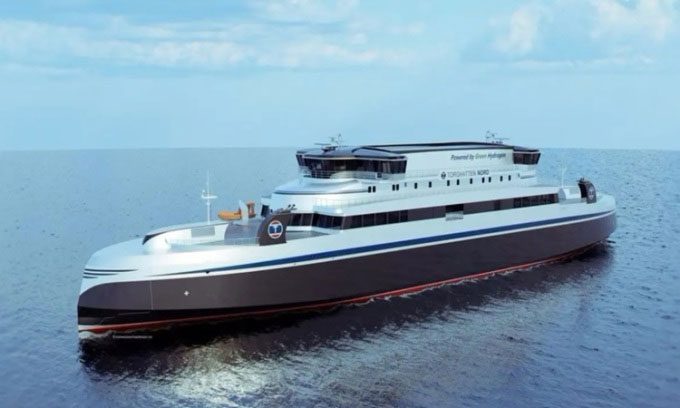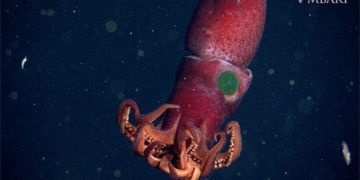The 117m-long vessel can carry 120 vehicles and will use green hydrogen for at least 85% of its Arctic route.
Transport company Torghatten Nord has signed a contract with the Myklebust shipyard in Norway to construct the largest hydrogen-powered ship in the world. This new vessel is designed to transport 120 vehicles on Norway’s longest ferry route, operating in the waters of the Vestfjordstrekninga area located within the Arctic Circle, as reported by Interesting Engineering on April 19.

Myklebust will be responsible for building the largest hydrogen-powered ship in the world. (Photo: Myklebust)
According to Myklebust, their vessel will connect the towns of Bodø and Lofoten. The vehicle will utilize hydrogen produced in Bodø. The Norwegian ship design company will be responsible for the ship’s design, which is expected to be delivered in 2026. The large-capacity vessel will be constructed at Myklebust’s facility in Gursken, south of Ålesund. The construction process will require an increase in staff and operations at the shipyard in the near future. In addition to closely collaborating with the Norwegian Maritime Authority to establish safety standards for this entirely new class of ship, the project will also involve multiple suppliers regarding design, technology, equipment, and hydrogen.
Connecting Bodø, Røst Island, Værøy, and Moskenes along the 278 km Vestfjordstrekninga ferry route, the largest hydrogen-powered ship in the world will enhance maritime transportation. According to Offshore Energy, the 117m-long vessel will primarily use green hydrogen for at least 85% of its journey through the harsh Arctic waters. The ship will face challenging conditions with an average speed of 31.5 km/h. However, the ship’s design will ensure efficient operation.
The onboard storage system will provide hydrogen for the fuel cells, converting energy into electricity to power the propulsion system and auxiliary systems. The use of hydrogen will help reduce approximately 26,500 tons of CO2 emissions annually along the route.
This project is significant as passenger transport using hydrogen on such long routes in harsh conditions has never been done before. It results from a collaboration between Torghatten Nord, the Norwegian ship design company, the Myklebust Verft shipyard, the SEAM system integration unit, and the hydrogen supplier GreenH.


















































